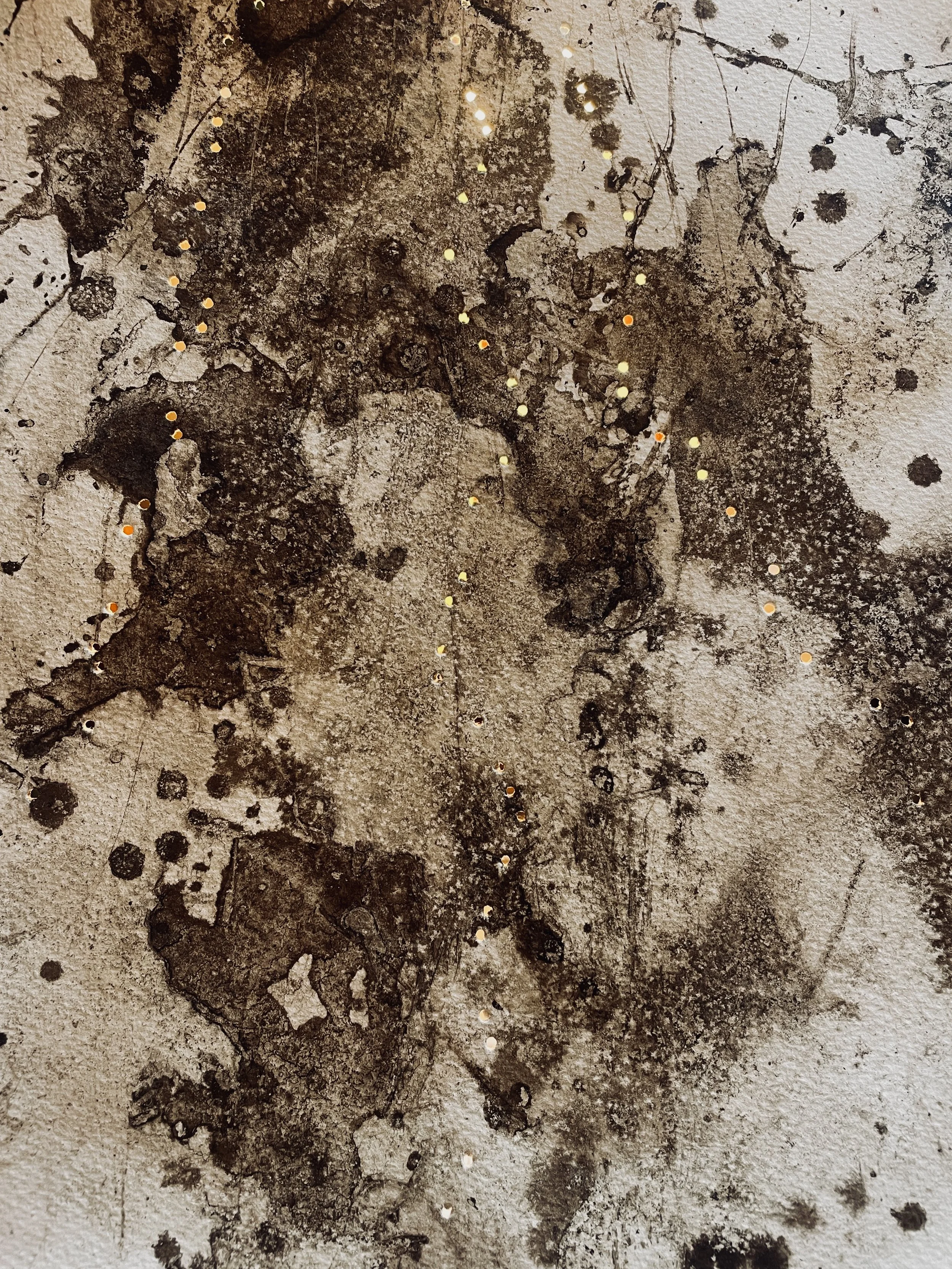Unit Two Assessment | 3 minute video
Unit Two Video Text
Before the MA my work was mostly painting and drawing of the landscape, which had begun to feel thin and overly self conscious. I wanted to see the Earth more authentically, unearthing unresolved feelings of personal and collective grief and move my looking into understanding and participation. My family and I bought a renovation project in Wiltshire two years ago and chain sawing up the surrounding neglected, ailing hedges and trees, creating huge piles of trimmings and arboreal remains, captured my interest and I started drawing the tangled piles of discarded branches, finding them more interesting than their living counterparts. Over time I watched their discarded limbs sink slowly back into the ground as decay set in, heating and rotting like a huge composting death pyre.
The idea of our natural world as a memento mori has long captured my imagination and I return to our collective land as a shared tumulus in my work time and again. If there have been 117 billion humans to have walked our earth plus all the other-than-human, most are recollected only in the way that they form the dirt upon which those of us still breathing walk.
I am making drawings of and from my compost heap, which I see as a metaphor for wider decay and renewal. I am experimenting with materials from the compost including paper making and casting, liquid paper, compost humus ink and charcoal made from the Earthly goo that seeps out of the decaying, burning heap of spent organic rubble. I have been shredding, boiling and blending up kitchen waste with recycled paper and garden compost matter as a way of climbing inside the discarded organic physicality of recycling and understanding what my surroundings are made of. I leave the drawings outside for days to watch the decaying process with help from the worms and crawlies. The liquid paper is drawn into fragile networks of lace or drawn onto paper. The drawings are made, recycled and returned to the compost heap for the cycle to begin again.
I see the natural world through the lens of this oscillation between decay and renewal, a memorialisation of belonging and loss; a type of visual archaeology where life and death are embedded in layers of organic matter and memory coding. Ecological chaos and ruination have become the context of my surroundings and I see these symbols of remembrance and shared grief but also cautious hope as expressions of my own internal and external landscapes.
I feel like the compost works and paintings I am also making in the studio are becoming boneyards. Not landscapes or reflected places but tapestries of spent being. Not being a religious person I have often balked at the thought of graveyards and have never visited those where my loved ones are laid to rest. I feel tremendous comfort in the idea that we live and die as individuals but in death we return our borrowed molecules and residuum to Nature where life continues its unabated cycles. Forgotten but recollected, re-collected. Our existence is so brief but our deaths go on forever
